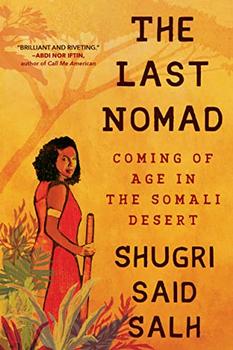Book Club Discussion Questions
In a book club? Subscribe to our Book Club Newsletter and get our best book club books of 2025!
For supplemental discussion material see our Beyond the Book article, Nomadic Housing: Somalia and Beyond and our BookBrowse Review of The Last Nomad.
Please be aware that this discussion guide will contain spoilers!
- The author introduces the reader to the Somali proverb, "When an elder dies, a library is burned." In The Last Nomad, Salh tells us that she feels a sense of urgency to archive her family's stories and keep them alive. Does your family or culture have a tradition of oral histories? Why is it important to learn from our elders and earlier generations?
- How much did you know about Somalia, nomadic life, and/or the Somali Civil War before reading The Last Nomad? Did the story introduce you to events or lifestyles that you were originally unfamiliar with or to a new perspective? If so, in what ways?
- The author was exposed to Somalia's rich oral tradition as a nomad and begins each chapter with a Somali proverb. Did any of these ring true to you or remind you of proverbs you have heard from your own culture? Which proverbs resonated with you the most?
- As a nomad herself, Salh's mother considered it an honor for a young Shugri to help her ayeeyo with the demands of nomadic life. What was your initial reaction when the author was given as a gift of labor to her ayeeyo? Did that opinion change when you learned how Salh felt about it?
- Salh's father fought for her to have an education instead of living as a nomad. In what ways did the nomadic lifestyle give the author an education? How does this lifestyle compare to going to school in a classroom?
- Salh writes that her father ensured that both his sons and daughters got an education, which was a bold view at the time. In what ways did Salh's father raise her within traditional Somali gender roles, and in what ways did he not?
- As a child, Salh learned a deep sense of courage and independence from her fearless ayeeyo. What are some lessons Salh learned from her ayeeyo, and how did they help her face
challenges throughout childhood as well as her adult life? In what ways was Salh's grandmother different from the other Somali women in Salh's life?
- What did you know about female genital mutilation (FGM) prior to reading The Last Nomad? How is FGM normalized in Somalia and how did this harmful practice become an integral procedure there, according to Salh? What is the relationship between FGM and beliefs about female virginity?
- During Salh's FGM process, she describes herself as being brave and prideful. She even admits that she scorned "the cowardly behavior" of the other girls who were scared and tried to run. Were you surprised by the author's attitude toward the process? By anything else about FGM? As an adult, how does Salh approach the legacy of FGM and its impact on her body and mind?
- During the author's time at the Families for Children Orphanage (FFC), she experienced a lot of hardships, but she also had many moments of joy. Which events and people at FFC gave her the most strength, pride, and courage?
- In The Last Nomad, Salh details her experience of civil unrest, instability, and violence during the start of the Somali Civil War and while fleeing from the war. How did a young Salh make sense of the everyday violence and tragedy she witnessed? How did she make sense of her new status as a refugee at the border and in Kenya?
- When the author landed in Canada during the winter, she had never seen snow before, let alone any of the things most people in North America take for granted, like elevators and washing machines. What are some differences Salh observes, and what skills and strategies did she lean on in her new environment? Have you ever had to adjust to a different society and culture?
- What are the ways in which Salh leans on community as she flees the Somali Civil War and finds refuge in Kenya and ultimately North America? How did Salh's expectation of North
America compare to her reality?
- What are some of the ways, positive or negative, in which Salh's childhood experiences continue to resonate in her life in California today?
- Salh paints a beautiful portrait of her nomadic life, pre-war Somalia, and the desert and delicious foods. What were your favorite descriptions?
Unless otherwise stated, this discussion guide is reprinted with the permission of Algonquin Books.
Any page references refer to a USA edition of the book, usually the trade paperback version, and may vary in other editions.
